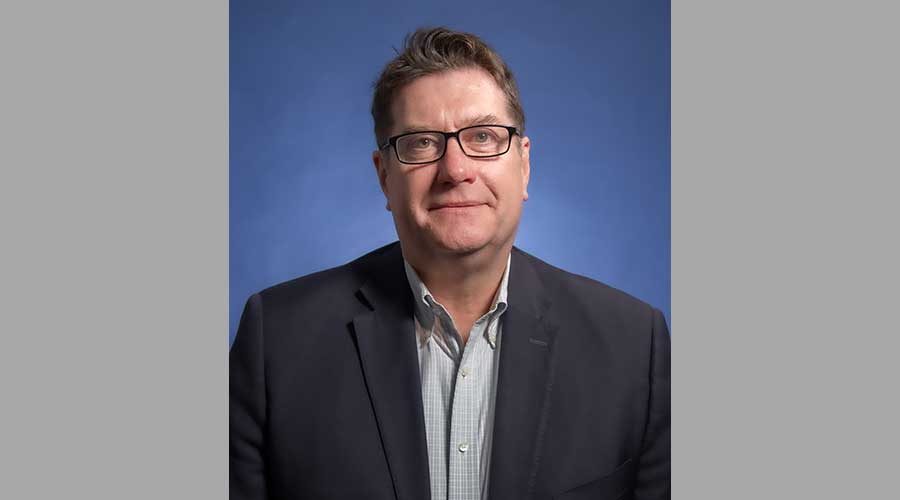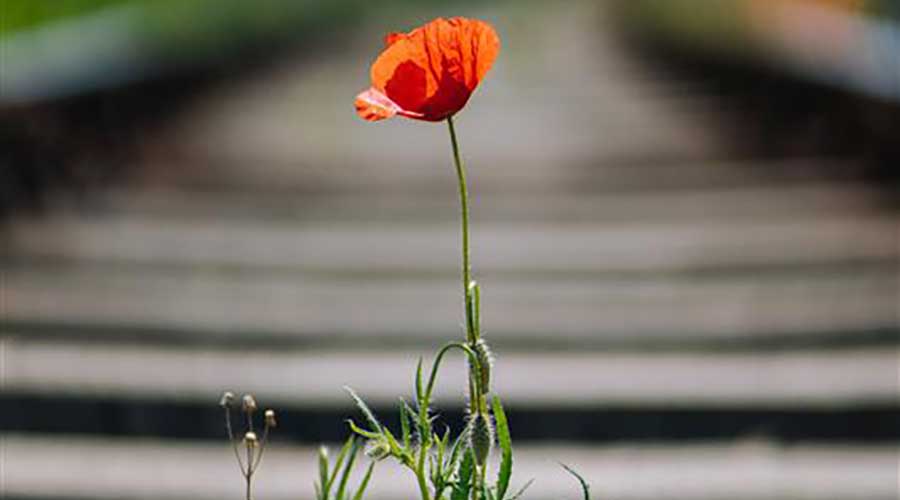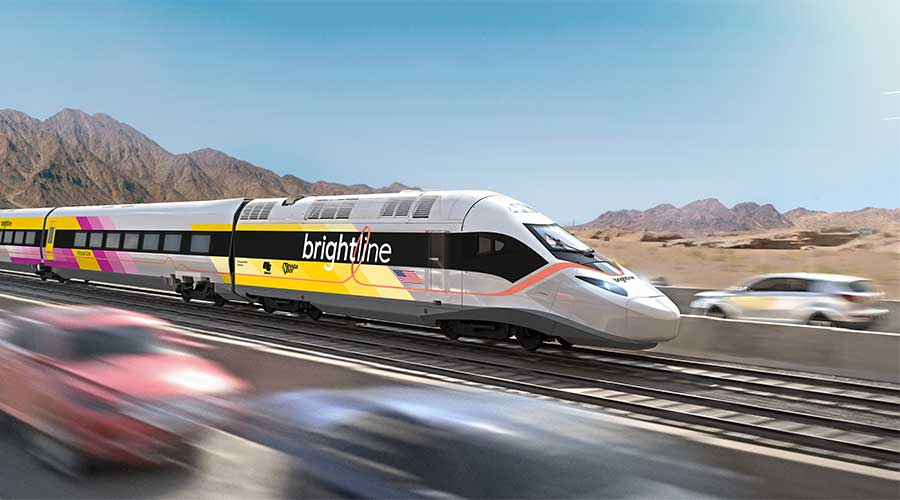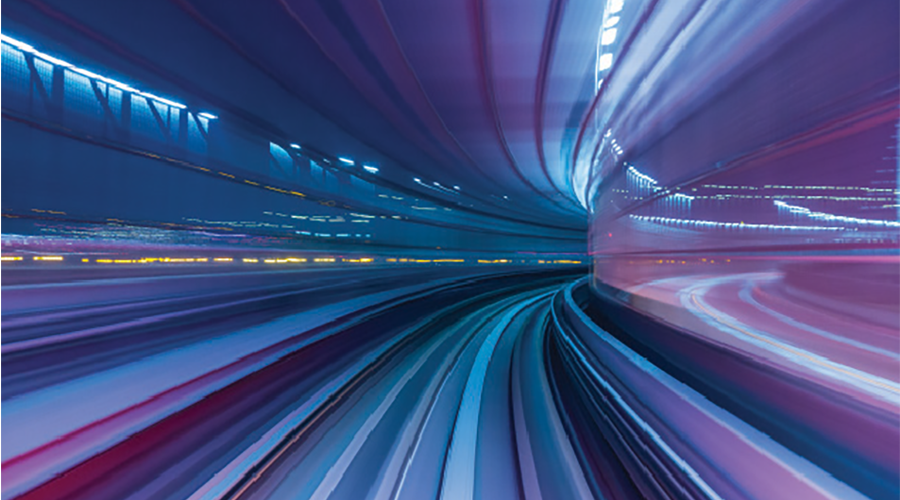Stay updated on news, articles and information for the rail industry
April 2012
Rail News: Passenger Rail
Light-rail update: San Diego Metropolitan Transit System's trolley renewal project:
by Angela Cotey, Associate Editor
In 1981, the San Diego Metropolitan Transit System (MTS) launched service on the initial phase of the San Diego Trolley light-rail system — a 15.9-mile segment between the U.S.-Mexican border and downtown San Diego. In subsequent years, MTS extended the later-named Blue Line and also built what are now known as the Orange and Green lines, creating today's 53.5-mile, double-tracked system.

In the 1980s, the trolley was the poster child for modern-day light-rail systems in the United States. After MTS opened the highly successful line — which at one time boasted a farebox recovery ratio of 105 percent — other cities wanted to follow suit. Transit planners from Portland, Ore., Dallas, Sacramento, Calif., Denver and Salt Lake City visited San Diego to tour the system and take notes.
But now, the initial phases of the trolley system are more than 30 years old and in need of a facelift. In 2010, MTS launched a four-year, $570 million trolley renewal project designed to improve on-time performance, modernize stations, upgrade technology, make trains easier to board and even upgrade a freight-rail line.
"There are a number of objectives, all of which are going to make our system more reliable, in a better state of good repair and significantly improve the customer riding experience," says MTS Chief Executive Officer Paul Jablonski.
The project calls for rehabilitating all Blue and Orange line stations to accommodate low-floor vehicles; realigning the Green Line to eliminate transfers in downtown San Diego; replacing overhead contact wire; upgrading the 90-pound rail to 115-pound rail; installing fiber optics systemwide; upgrading the signal system and power substations; and rebuilding several grade crossings. In addition, stations will be rehabilitated to feature bike lockers, waiting areas and next-train arrival systems.
MTS is about one-third of the way through the project, which is expected to be completed in 2014. As of early March, the agency had replaced overhead wire and installed fiber optics along nearly 30 miles of track on the Blue Line.
MTS also has begun design work for stations on all three lines and is set to launch construction on six downtown stations; work already is under way on four of 12 Orange Line stations, and construction contracts for the Blue Line stations were scheduled to go out for bid last month.
In September 2009, MTS ordered 57 S70 light-rail vehicles from Siemens. The low-floor units will operate on the rehabilitated Blue and Orange lines, replacing the high-floor vehicles currently in operation.
Because MTS couldn't afford to replace all 123 high-floor cars at once, the agency plans to run mixed consists on the two lines, with a new vehicle in the front and back, and an older SD100 car in the middle.
"This way, we could still get low-floor capability throughout the system," says Jablonski.
The $244.2 million contract with Siemens was an add-on to an order placed by the Utah Transit Authority. Both agencies were in the market for 80-foot-long, low-floor vehicles that could fit within existing 240-foot station blocks. However, typical low-floor vehicles are 92 feet long, which means the agencies' existing stations wouldn't be able to accommodate three-car consists, says Jablonski.
Brainstorming Session
In 2008, MTS and UTA held a symposium with car builders to discuss the dilemma and determine ways the manufacturers' existing low-floor vehicles could be re-engineered to fit an 80-foot envelope.
Because UTA needed the cars sooner than MTS, UTA headed the development of the specifications and procurement document. Siemens won the contract after redesigning its S70 car to fit UTA's and MTS' 80-foot requirement.
Siemens began delivering the vehicles to MTS in August 2011; cars will be delivered through 2013. Once low-floor vehicles are operating on the Orange and Blue lines (by the end of 2012 and 2013, respectively), passengers with wheelchairs, walkers or strollers will be able to board more easily. The quicker boarding times will should improve on-time performance, MTS officials believe.
"Right now, we have a hydraulic lift that has to be raised up and down by the operators," says Jablonski. "We've seen a growth in the number of people using wheelchairs, the number of mothers boarding with strollers and the number of people with shopping carts, and this has started to affect us operationally."
In recent years, the Blue Line's on-time performance has dipped below 90 percent, while Green Line on-time performance averages between 95 percent and 98 percent.
The faster-to-board cars, coupled with signal system improvements, will enable MTS to increase capacity on the Blue Line — the agency's most-used light-rail corridor. Once the upgrades are completed, the agency plans to reduce headways from seven-and-a-half minutes to five minutes during peak periods.
"We are at capacity on many of our trips," says Jablonski. "When we start operating in the morning, we have lines waiting for trains at the border."
MTS' newest light-rail line is attracting some attention within the trolley renewal project, as well. The agency is in the midst of extending the Green Line about five miles into downtown San Diego. The line currently terminates at Old Town Transit Center, where passengers then have to transfer to the Blue Line into downtown.
MTS is redesigning eight stations south of Old Town to accommodate low-floor vehicles — which currently only operate on the Green Line — as well as add shelters and benches, and upgrade power capacity to handle closed-circuit television and next-train arrival systems. Work has been completed at two stations and is under way at two more. The agency expects to complete work on the remaining four by September, when the Green Line extension is scheduled to open.
"It will change our operating profile," says Jablonski. "The Blue Line that goes to Old Town will stop downtown, and the Orange Line that used to extend in front of the [San Diego] Convention Center also will terminate downtown, and the Green Line will accommodate all of it."
The Freight Factor
The trolley renewal project has freight-rail implications, too. The Blue Line operates with temporal separation over a freight-rail line owned by MTS. Operated by RailAmerica Inc. as the San Diego and Imperial Valley Railroad (SDIV), the freight line needs to increase capacity to capitalize on plants being built in Mexico by Fortune 100 companies, says Jablonski.
Some of the upgrades being made through the trolley renewal project, such as the new signal system, will enable SDIV to operate two freight trains at night rather than one, says Jablonski.
"Trucks tax the limited roadways we have coming out of Mexico, so we're banking on increased freight capacity to relieve some of that truck traffic and move more goods more efficiently."
Once MTS' services are upgraded, agency execs plan to dive into a new light-rail extension.
The agency is conducting preliminary engineering for an 11-mile extension along the Pacific Coast, from Old Town north into the University City area — one of the area's largest employment centers, says Jablonski. The community is home to the University of California at San Diego, three hospital complexes, smaller schools and office complexes.
Known as the Mid-Coast Corridor, the project is going through the Federal Transit Administration's New Starts process and has been rated as "medium-high" by the federal government, according to Jablonski.
MTS officials expect the line will have a similar impact on the University City community as it did in the Mission Valley, where the agency launched the Green Line in 2005.
The line runs in part through a tunnel beneath the San Diego State University (SDSU) campus, with an underground campus station. MTS now serves 10,000 passengers per day at the station and has curbed the university's need to expand parking.
"It's a really great story to tell in how transit can have a huge impact on a university that's constrained in terms of land use," says Jablonski. "Once [UC-San Diego] saw the impact the line had on SDSU, they couldn't wait to get rail up there."
MTS expects to launch construction on the Mid-Coast line in 2014 or early 2015 and open the line by 2017.
"That will put our rail system to almost 65 miles, which will then be one of the largest light-rail systems in the country," Jablonski says.
And, with the soon-to-be made upgrades, perhaps a born-again poster child for U.S. light-rail systems.
The Funding FormulaAbout half of the trolley renewal project's cost, or $280 million (not including the freight-rail improvements), is being funded through Proposition 1B, a bond measure approved by California voters in 2008. Between $120 million and $130 million will come from TransNet 2, a half-cent local sales tax renewal passed by San Diego-area voters in 2008. Another $60 million has been allocated from Proposition 1A, the high-speed rail bond measure, which authorized some funds for improvements to transit systems that will connect with future high-speed services. MTS received another $55 million through the American Recovery and Reinvestment Act and $40 million in federal formula funds. |


 2025 MOW Spending Report: Passenger-rail programs
2025 MOW Spending Report: Passenger-rail programs
 Gardner steps down as Amtrak CEO
Gardner steps down as Amtrak CEO
 Guest comment: Oliver Wyman’s David Hunt
Guest comment: Oliver Wyman’s David Hunt
 Women of Influence in Rail eBook
Women of Influence in Rail eBook
 railPrime
railPrime







